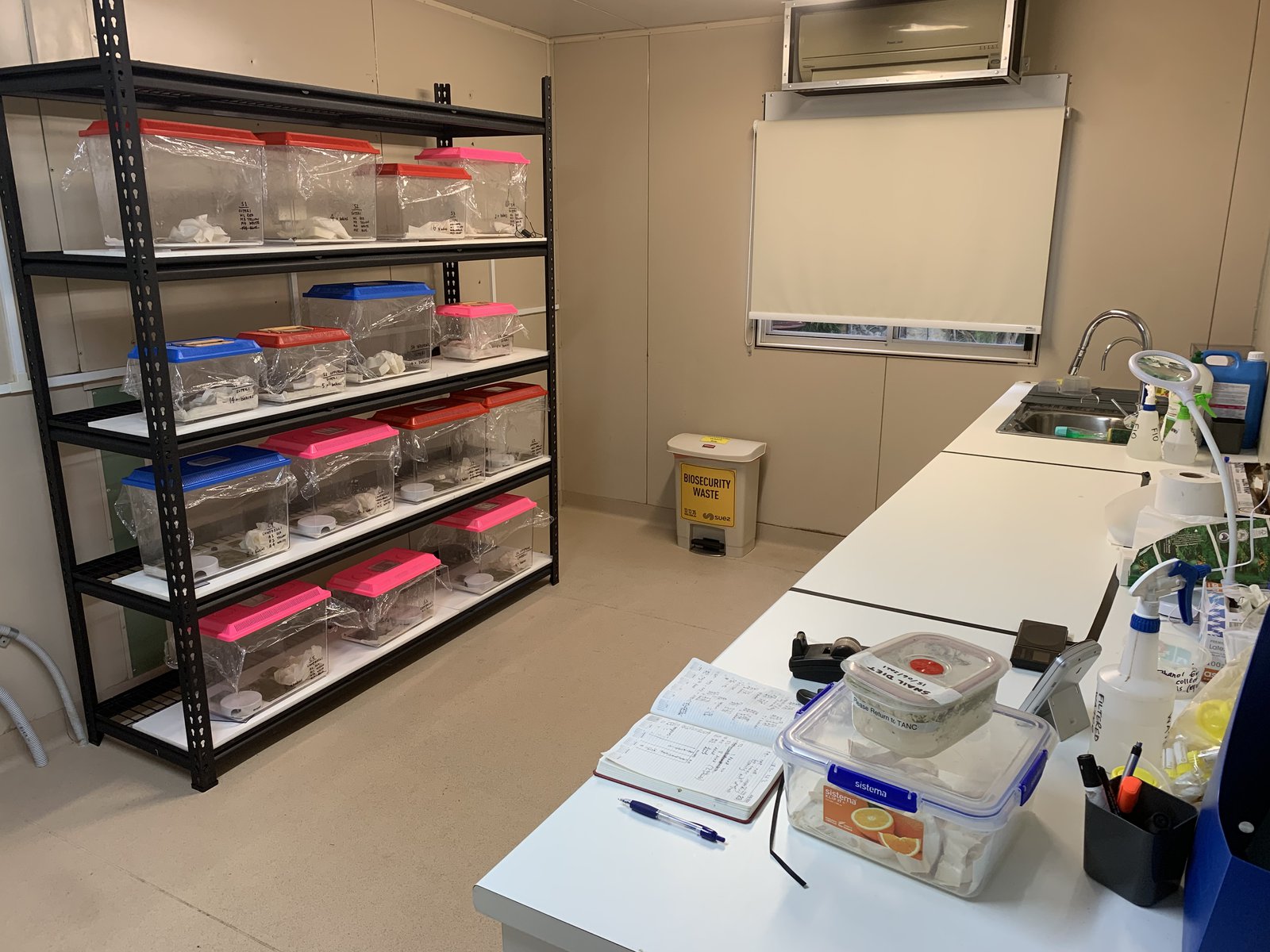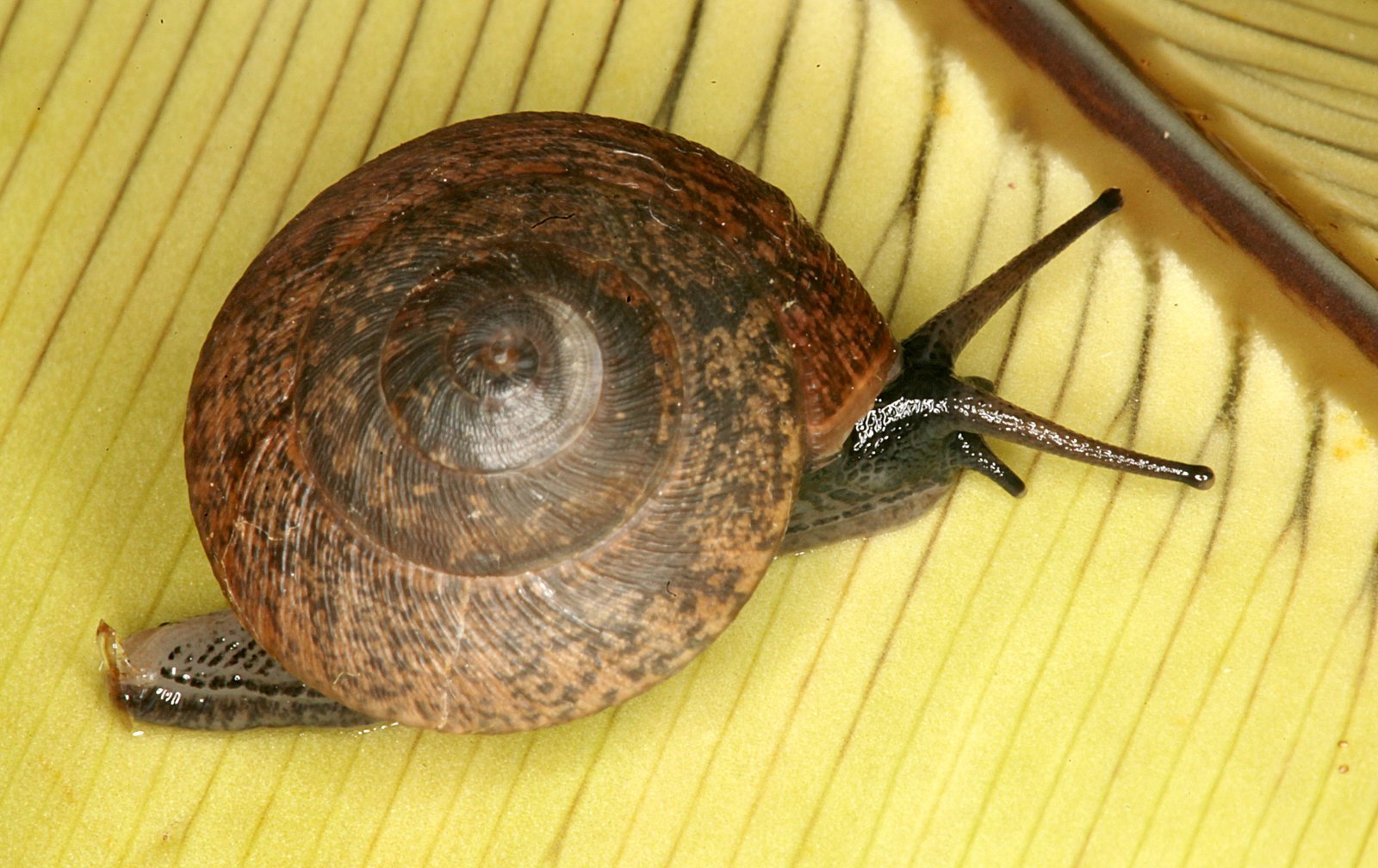More than a snail’s pace: Progress on Norfolk Island’s threatened snails
There have been moments of excitement and moments of despair along the way, but six months after starting a zoo-based breeding program for two Critically Endangered land snail species from Norfolk Island, the population is stable and progressing well.
Norfolk Island has an amazing diversity of unique land snail species, as described in some previous AM blogs (see more information). Threats to their survival include habitat loss, climate change, and predation by introduced rodents and chickens. To address some of these conservation concerns, the Australian Museum is leading a collaboration with Taronga Zoo, Parks Australia and the Norfolk Island Regional Council to protect the two largest species, which are both Critically Endangered and at risk of extinction. This collaboration has raised funds for surveys, habitat enhancement, increased pest control around the populations, and an ex situ breeding program based at Taronga Zoo, Sydney. Today I’d like to share an update on our zoo-based breeding program.

Palm forest on Norfolk Island.
Image: Isabel Hyman© Isabel Hyman
First, a brief reminder about why we care so much about snails! These fascinating creatures are adapted to living in environments from rainforest to desert, with endless variation in their diet, lifestyle, reproduction and development. They are also the most threatened animal group on Earth – driven by a particularly high rate of extinction among land snails on Pacific Islands. In response to this, captive breeding programs have been established for many Pacific Island species, including London Zoo’s Snail Conservation Programme and Hawaii’s Snail Extinction Prevention Program. Over many decades, these breeding programs have bred and released into the wild well over 15,000 snails from many species.
Initially, we based our own husbandry program closely on London Zoo’s. The diet that we use is a paste which we spread thinly on a Perspex sheet, in order to mimic biofilm, which is a complex mixture of microscopic organisms that many snails feed on. However, every species has slightly different needs, and one of the greatest challenges in snail husbandry is determining the particular needs of each species. For example, a ground-dwelling snail may eat biofilm growing on the surface of leaves or logs, or it may eat decaying leaves at a certain level of deterioration, or fungi that only grow inside rotten logs… the list of possibilities is endless. To add to this, biofilm can be made up of hundreds of microorganisms, so replacing it is challenging.
When the Norfolk Island snails first arrived at Taronga Zoo in May 2021, their initial reproductive rate was very high and they quickly doubled and then tripled their numbers. There was some mortality of baby snails, but not too high, and things went very well for about 6 weeks. However, after that we started to have some deaths of adult founders. The zoo staff are familiar with this pattern: it usually takes about 6 weeks for the effects of habitat or diet to show up. It is also very common for it to take some time to get the right conditions for any new species being kept in a zoo for the first time.

© Taronga Zoo

© Taronga Zoo
After this, the Taronga team put many resources into solving the problem, including input from veterinary staff, dieticians, and lots of hard work from the husbandry team. One major difficulty is that once the snails had lost condition, it was very difficult to bring them back to good health, even with improved diet and habitat. With so little known about these critically endangered species, another challenge was the lack of adequate information about the snails’ biology and behaviour in their natural environment to use as a benchmark. So over time the populations gradually reduced (particularly in Mathewsoconcha suteri), despite huge efforts from the zoo staff to turn things around, until stabilising about 6 weeks ago.
While setbacks early on in any captive breeding program are to be expected, it still impacted the husbandry team greatly. The team are all passionate about protecting species on the brink of extinction and devoted many hours to solving the problems affecting the snails.
In spite of some losses to the zoo population, the recent stabilisation in population size indicates that we have successfully established the correct conditions, and we are very hopeful of a long-term positive outcome. We know from our colleagues at the snail breeding programs in Hawaii and London that it is common to struggle to find the right conditions on the first attempt, since each snail species has certain requirements that are mostly unknown. The good news is that while we did struggle initially, our population size is now stable and the snails are growing well, so the current conditions and diet appear to be suitable. We have also learned a great deal about the needs of these unique creatures. For example, we have learned to keep them in smaller containers, at a higher density, and under lower humidity; we know that the food is accepted best when it is spread on a soft surface rather than a hard one; we have improved the composition of the food, and have investigated the best way to provide calcium; and we have improved the regime of feeding, cleaning and handling. Each of these changes has seen a significant improvement in the health of the snails.

Mathewsoconcha belli, a Critically Endangered Norfolk Island endemic.
Image: Adnan Moussalli© Museums Victoria

Advena campbellii, until recently feared to be extinct.
Image: Adnan Moussalli© Museums Victoria
Now that we have found the right conditions for Advena campbellii, which has responded best to the current diet and environment regime, our intention is to focus on just this species alone for the time being in order to establish a healthy population. We intend to collect another 14 individuals of Advena campbellii to add to the zoo-based population early next year. Despite their close relationship, the two snail species have different needs, and an investigation of niche habitat requirements and microclimate conditions in Mathewsoconcha suteri will be carried out before more specimens are collected. In the meantime, our efforts to protect and grow the wild populations are continuing, and we will provide another update on the zoo-based breeding program next year.
Dr Isabel Hyman, Scientific Officer, Malacology, Australian Museum Research Institute.
More information:
- Hyman, I. 2021. The science behind the stamps: Land snail research on Norfolk Island. Australian Museum blog.
- Hyman, I. 2020. Raised from the dead: Species assumed extinct rediscovered on Norfolk Island. Australian Museum blog.
- Hyman, I. 2020. Rare snail species found alive on Norfolk Island after 130 years. Australian Museum blog.
Acknowledgements:
The project was funded by grants from the Australian Museum Foundation, Graeme Wood Foundation and National Geographic Society.

